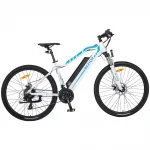Digital marketing has evolved rapidly over the years, with many new forms of online marketing emerging constantly. It’s not restricted to merely displaying your ads or creating campaigns. Today, a business has a choice of paying for only those ads that have delivered the intended action. That means advertisers have the liberty to decide their goals first and only pay when those specific actions occur through digital marketing efforts. This is what we call ‘performance marketing.’
Performance marketing, like many new forms of online marketing, including social media advertising, affiliate marketing, and email marketing, has gained immense popularity in recent years. The primary reason for this is its targeted or focused nature. Performance marketing, as the name suggests, is based on the performance of your marketing efforts and hence, can be considered a more reliable form of digital marketing. But what exactly is it, and how does it work? Let’s find out all about performance marketing in this article!
Table of Contents
What is Performance Marketing?
Performance marketing is a kind of digital marketing that combines paid advertising and brand marketing. It’s typically an advertising campaign wherein brands only pay for marketing services once their goals have been met or when any desired action is completed. These can include clicks, leads, sales, bookings, downloads, etc.
As opposed to organic and traditional marketing, performance marketing management focuses on driving actions, tracking and measuring those actions, as well as determining the ROI of each asset, campaign, or activity. You must have seen many campaigns while scrolling through your social media or watching videos online.
How Does Performance Marketing Work?
The performance marketing process can be broken down into these simple steps:
Planning and strategising
This is the initial phase of performance marketing that involves planning and strategising the desired actions that you want your TG to take and ways to achieve them.
- Selecting the appropriate channel
Digital performance marketing utilises channels like display, search, social, email, affiliate, and mobile. - Get partners on board
Once you have finalised the channels, the next step is to identify and partner with the right publishers. - Setup campaigns & track results
The final step is campaign setup and results tracking. As part of this process, the ad will be created, the targeting will be defined, and the conversion goals will be determined.
Benefits of Performance Marketing
We have already seen what performance marketing is and how it works. But the next question that comes to mind is, what’s so special about it? Firstly, it gives the advertiser or the brand the power to pay only when their desired goal or performance is achieved. That way, these brands can rest assured that their marketing budget is only spent on successful ads. Secondly, this kind of marketing is extremely data-driven. This means more targeted efforts, which also means higher success rates.
This type of marketing also grants brands the liberty to optimise their campaigns based on their performance and keep making them better with time. They can make better marketing decisions and plan ahead based on the campaign performance and the extensive available data.
How is success measured in performance marketing?
One of the key defining elements is ROI, or return on investment, where each action taken is measured, analysed, and pitted against some pre-determined key performance indicators. That way, brands have an accurate understanding of how a campaign is performing and can optimise it further to improve the performance.
Here are some other key metrics to measure success in performance marketing:
- CPM
Cost Per Mille, or CPM, measures the cost of 1000 impressions of any digital ad for the advertiser. Basically, it is the cost for every 1000 times that an ad is shown to viewers. - CPC
Cost Per Click, or CPC, is the cost that an advertiser has to pay every time a viewer clicks on their ad. As compared to CPM, CPC is a better engagement indicator as it denotes that the viewer has taken the intended action and has actually clicked on the ad.
- CPA
Cost Per Action, or CPA, measures campaign performance with respect to the specific action that the advertiser wants their target audience to take. This can include a click, downloading something, signing up or subscribing, buying an item, etc.
- LTV
It focuses on the predicted “Lifetime Value” of a customer during his/her relationship with the brand or the company.
Types of Performance Marketing
- Social Media Marketing
Social media Marketing includes running ads on Facebook, Instagram, Twitter, LinkedIn, and more. You can extend your reach far beyond the original post of sponsored content by sharing your sponsored content organically on social media, which is the best way to drive traffic to your site.
- Search engine marketing (SEM)
Using search engines, such as Google or Bing, to drive traffic is known as search engine marketing. In terms of performance marketing, the focus is primarily on cost-per click (CPC), especially for paid advertising. Search engine marketing is almost always this by nature. For organic SEM, many performance marketers rely on content marketing and SEO-optimized landing pages.
- Native Advertising/Sponsored Content
With native advertising, your sponsored content lives seamlessly alongside organic content that you pay a publication to write about. As the performance marketer, you get a high degree of creative control over what they publish for you. Some publications call it native advertising, others sponsored content, but the strategy is the same. Native advertising takes advantage of the natural appearance of a web page or site to promote sponsored content.
- Content Marketing
Content marketing involves providing users with valuable information about your brand and contextualizing it. For example, a vitamin company might write a series of informative blog posts about the benefits of probiotics, with a link back to the probiotics they sell. There are many ways to create content for marketing, including blogs, case studies, e-books, and more.
Final thoughts
Performance marketing is highly advantageous for both B2B and B2C brands. While that’s the case, it’s crucial to collaborate with a team of marketing experts who understand the ins and outs. A leading performance marketing agency like Amura Marketing Technologies can be your greatest ally in this area.
Amura, through its data-driven MarTech solutions and full-funnel growth marketing approach, will ensure that your brand gets a digital edge and not only achieves the desired results but surpasses them. With over 15 years of experience, an on-time delivery record, extensive market understanding, agile processes, and a team of 300+ digital experts, they can be your ideal digital transformation partners. Ready to leverage performance marketing for upscaling your business online? Get in touch with Amura Marketing Technologies today!












